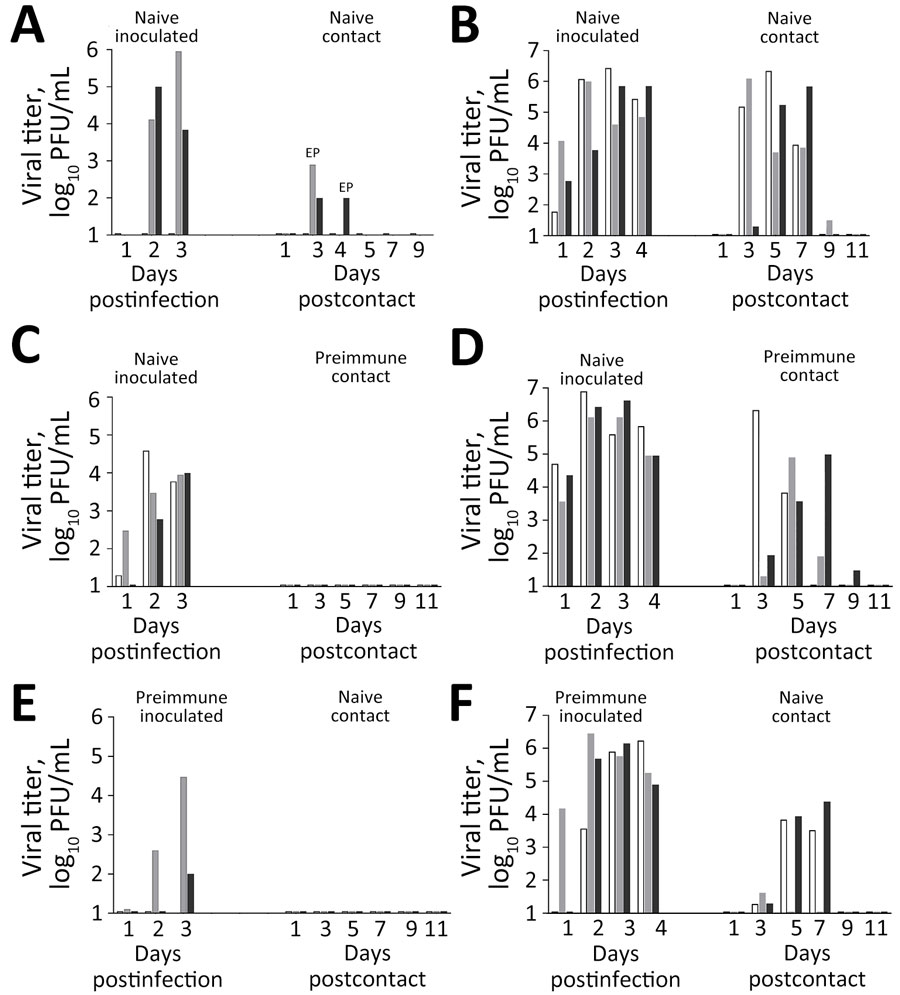Volume 31, Number 3—March 2025
Research
Effect of Prior Influenza A(H1N1)pdm09 Virus Infection on Pathogenesis and Transmission of Human Influenza A(H5N1) Clade 2.3.4.4b Virus in Ferret Model
Figure 3

Figure 3. Contact transmission of Texas/37 influenza A(H5N1) virus and Anhui/1 influenza A(H7N9) virus in study of the effect of prior influenza A(H1N1)pdm09 virus infection on pathogenesis and transmission of human influenza A(H5N1) clade 2.3.4.4b virus in ferret model. A, C, E) Transmission of Texas/37 H5N1 virus among ferrets; B, D, F) transmission of Anhui/1 H7N9 virus among ferrets. Different shades indicate individual animals. We inoculated 3 naive ferrets per virus (A–D) and 3 preimmune ferrets per virus (E, F) by respiratory inhalation exposure (Table). Each inoculated ferret was pair-housed with a contact recipient, with (C, D) or without preimmunity (A, B, E, F); contact was sustained for 48 hours for Texas/37 and for 72 hours for Anhui/1 before inoculated animals were humanely euthanized. Nasal wash samples were collected daily from inoculated ferrets (days 1–4 postinfection) and on alternate days from the contact animals (days 1–11 postcontact). The limit of detection was 10 PFU/mL. Two naive contact ferrets (panel A) reached humane endpoints and were euthanized on days 3 and 4 postinfection. Anhui/1, low pathogenicity influenza A(H7N9) A/Anhui/1/2013; EP, endpoint; NS, not statistically significant; Texas/37, highly pathogenic influenza A(H5N1) clade 2.3.4.4b A/Texas/37/2024.